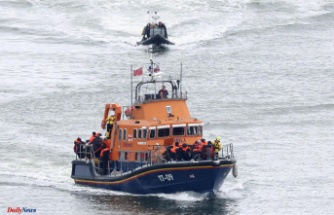The small and well-remembered Seat 600 (4,95 euro) is the first model of the collection of miniatures that ABC starts this Sunday, and that includes a total of fifteen classic cars for 9,95 euro each , which will come to the kiosk each Sunday until January 5, 2020.
First molding of the collection, this Sunday with ABC for 4,95 €Manufactured in Spain between 1957 and 1973, the 600 is a key vehicle in the history of Spain, contributing in large measure to its "motorization" in the post-war era. No other model has been so engraved in our collective subconscious, or as a sentimental memory or as a memory of their presence on our streets and roads . It is the car, as people are already very adult still remembers, that his father taught him to drive. With the 600, many middle-class families realizing the dream of purchasing your own vehicle for an approximate price of 63,000 pesetas, which today are 378,54 €.
[Click here to find out what happened in the summer of 1957 in Spain]
Initially, the Seat 600 featured with an engine of 633 cc engine capacity and 18/20 HP -which remained in production for six years, moving later to the versions D, E, and L-Special with a 767 cc, -increasing its power to 25 HP and later to 28 HP-, which occupied the ten years remaining of the journey of the 600.
In all cases, the body remained virtually unchanged, the margin of the change of orientation in the opening of the doors from 1970 on. And regarding the engine, the 600's original as we discussed above did not vary in just six years, faithful to their 18 and then 20 humble but self-willed horse, while the state of the art remained also unchanged, with 25 HP in D and E, and so only in his last year as as L-Special, won three horsepower, thanks to an increase in compression. Said L-Special, as its name indicates, brought refinements extra, as a covering that is more welcoming and ignition key with anti-theft steering.
But the 600-D appeared in 1963, and its successor the E, could be considered as "the 600" par excellence: with the displacement that would be the final until the end of his existence, was faced with the harsh conditions of the demanding paths of those times. But the 600 also had other virtues, of course. In the first place, its body design, taking advantage of their 3,30 m of length with a cabin that in theory fit four people, and a very fair five, although in practice they got many more.
The 600 had a good robustness basic and also provided a great ease-of-repair, as gameplay was simple and accessible . On the other hand, had parts in nearly all parts; not only in the official network, but in all the shops of accessories with which, with repairs small or not so small, it lasted years and years.
At the level of performance, the 600 achieved a maximum speed of 115 km/h and covered the first 1,000 meters to 45.5 seconds, a few figures are non-negligible if we talk about an engine that was producing 28 HP as maximum. Also, the consumption in city was 10 liters per 100 kilometers in the road in accordance with 6,5 liters, with a range of 461 km.
And what to say of the volume of the trunk. The 600 is formed with 68,5 liters, I had to share, under the hood, with the fuel tank and the spare wheel . But this was no impediment to go to the beach with all the baggage of the family, since one of the items "extra" fundamental of every good 600 of the time that price was having a good roof rack.
Date Of Update: 27 September 2019, 19:03











